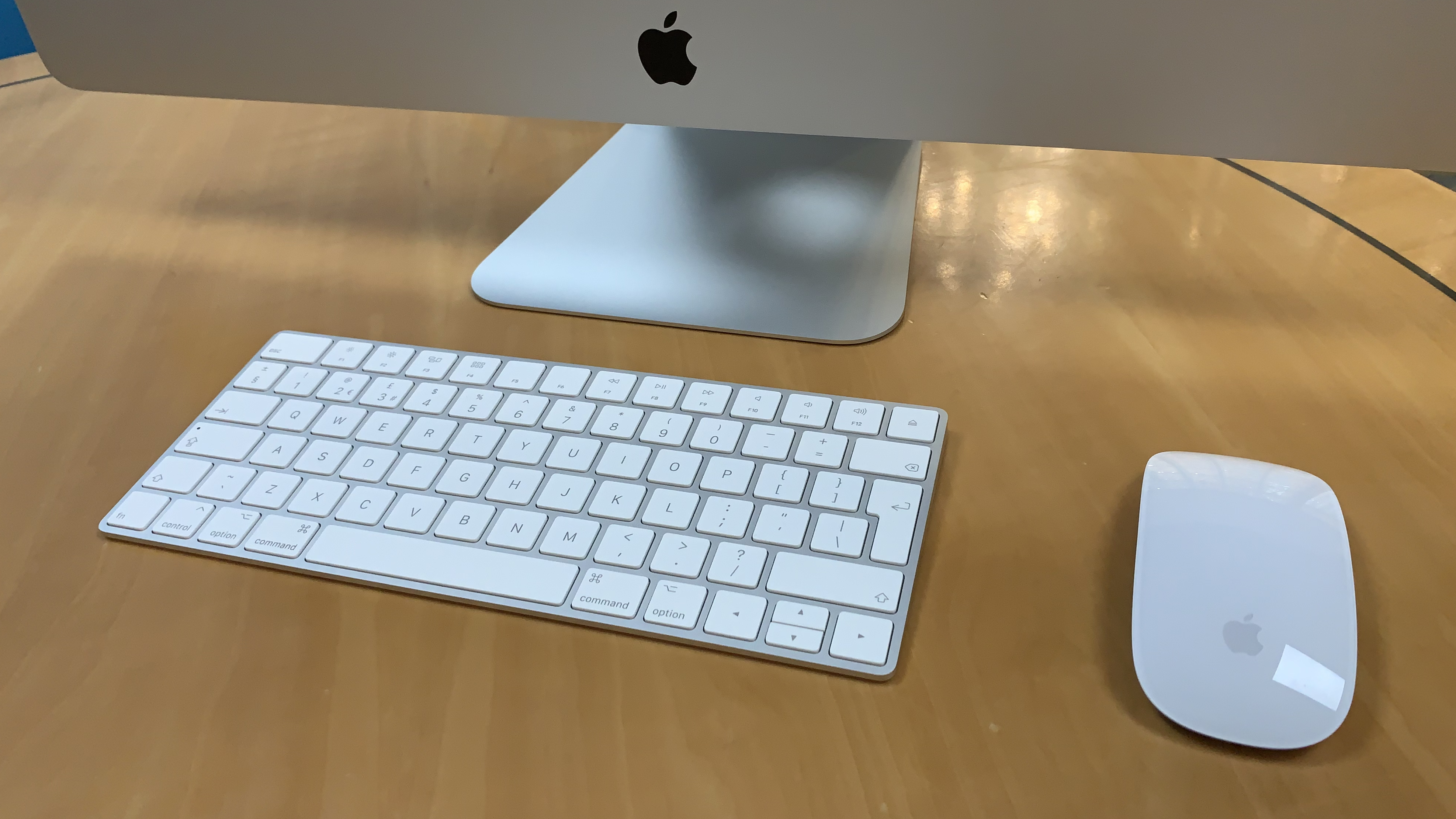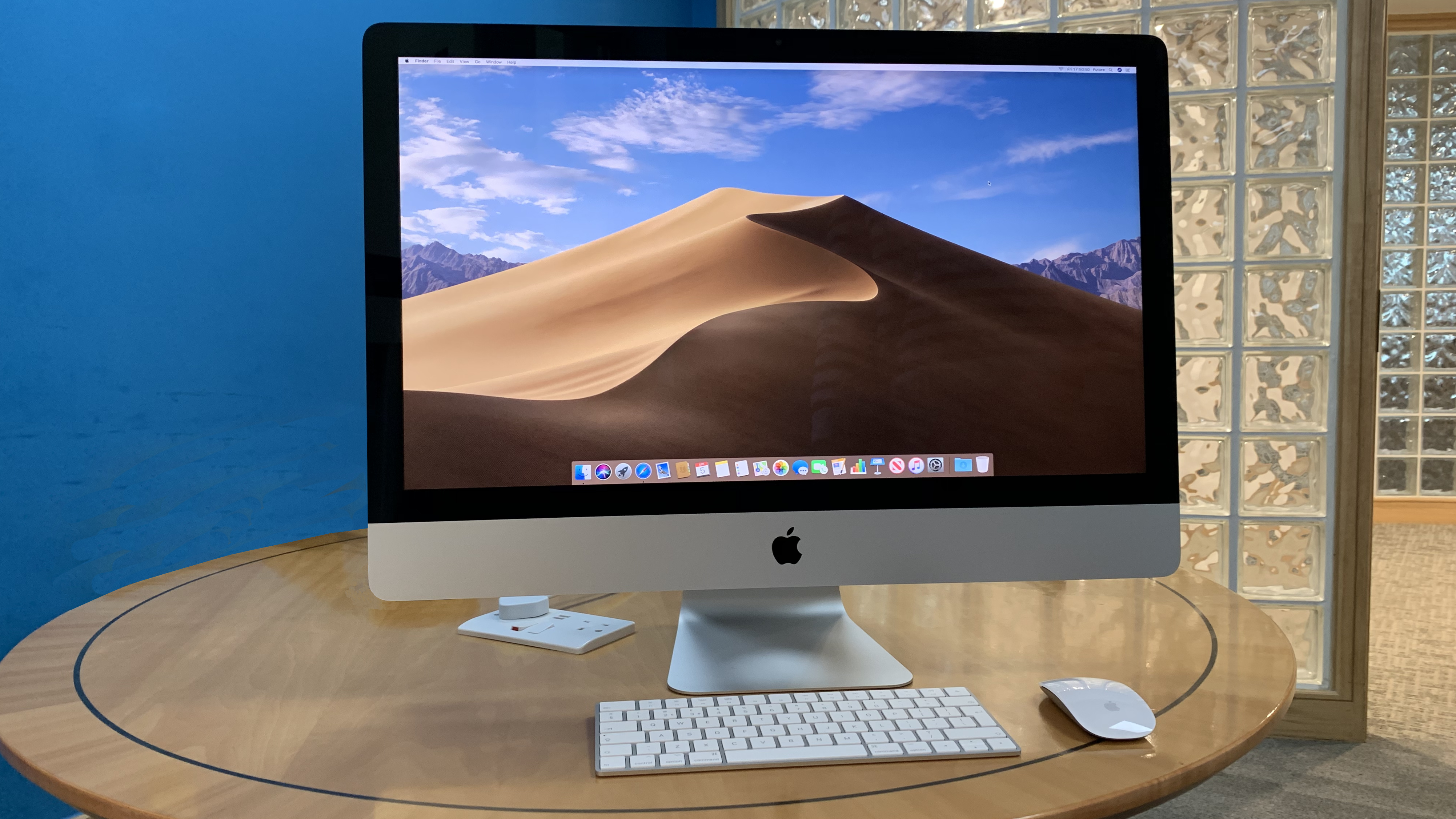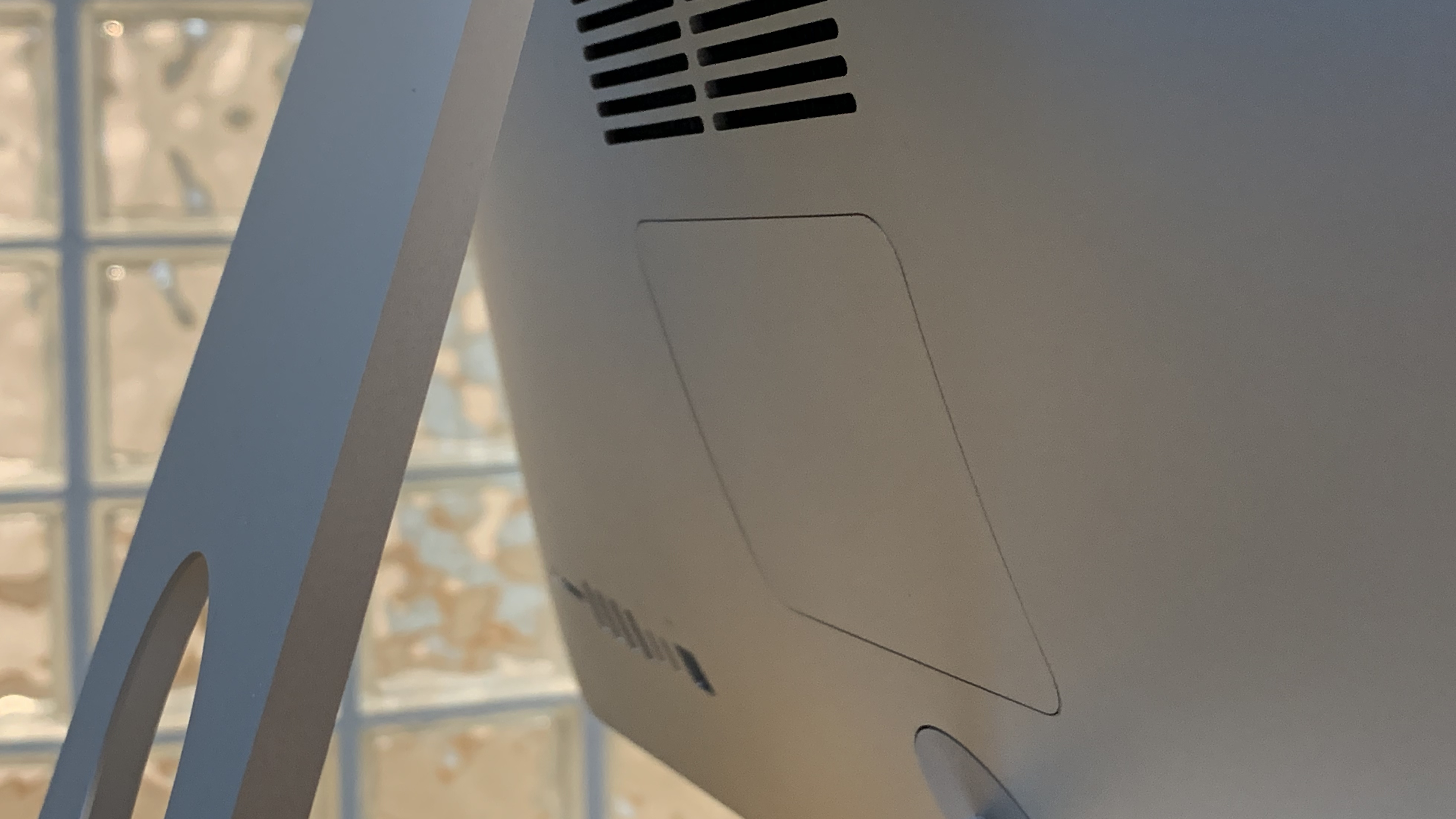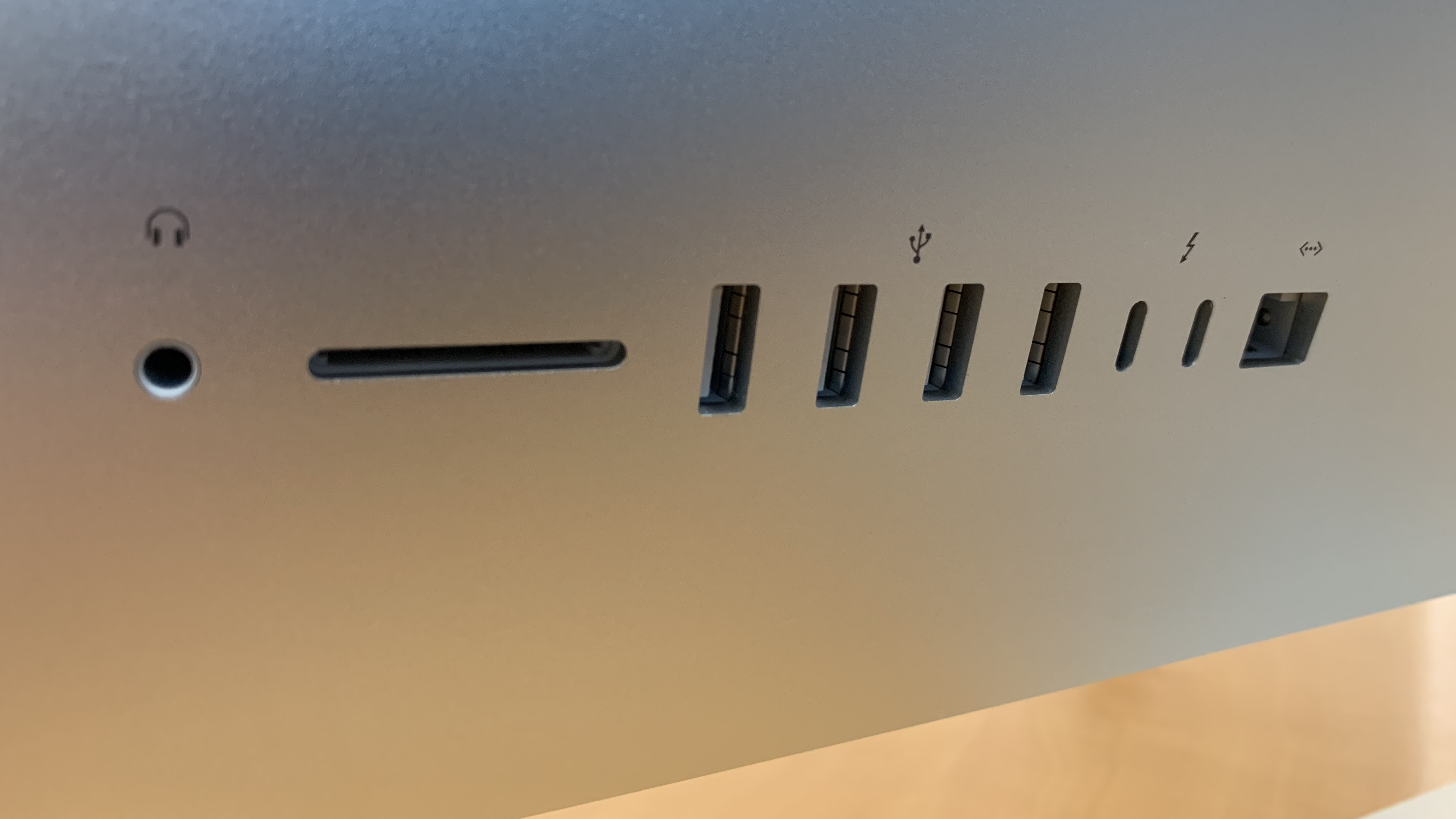Apple iMac 27-inch (2019)
The Apple iMac 27-inch 2019 is a powerful entry in the popular all-in-one computer line, even after all these years, complete with high-end configurations for those who need to upgrade their existing machine. With a 9th-generation Intel Coffee Lake Refresh processor, up to an AMD Radeon Pro Vega 48 graphics, and a super-fast 512GB SSD, the Apple iMac 27-inch 2019 is a highly-capable machine even by 2021 standards.
Apple is getting sued for not including dust filters in iMac and MacBooks
Apple blames Intel’s processor shortage for slump in Mac sales
Sadly, when it comes to the design, not much has changed here. The Apple iMac 27-inch 2019 still comes in the same tapered chassis as the 2017 model – the same design Apple has been using since late 2012. In fact, short of turning these two models on and taking each for a spin, you probably wouldn’t be able to tell the difference. So, if you’ve been holding out on a design overhaul or upgrade, you might be disappointed.
However, if what you need is an upgrade on specs, especially to replace an aging machine at home, the Apple iMac 27-inch 2019 is worth checking out.
The Apple iMac 27-inch might see a decent price drop for Prime Day 2021, especially with the new iMac 24-inch hogging all the attention right now. Hopefully, we’ll find some money-saving Prime Day deals to share with you between now and June 22. Check in regularly with us before you hit that buy button.
Here is the 27-inch Apple iMac configuration sent to TechRadar for review
CPU: 3.6GHz Intel Core i9-9900K (eight-core, 16MB cache, up to 5.0GHz with Turbo Boost)
Graphics: AMD Radeon Pro Vega 48 (8GB VRAM)
RAM: 16GB DDR4 (2,666MHz)
Screen: 27-inch 5K (5,120 x 2,880) Retina display (P3 wide color)
Storage: 512GB SSD
Ports: 4x USB 3 (Type-A), 2x Thunderbolt 3 (Type-C), SDXC card slot, 3.5mm headphone jack, Gigabit Ethernet, Kensington lock slot
Connectivity: 802.11ac Wi-Fi, Bluetooth 4.2
Operating system: macOS 10.14.4 Mojave
Camera: FaceTime HD
Weight: 20.8 pounds (9.42kg)
Size: 25.6 x 8 x 20.3 inches (65 x 20.3 x 51.6cm; W x D x H)
Price and availability
Let’s ignore our revved-up review model’s specs for a moment, which send the price north of three grand, and first talk about what you get in the three more affordable, off-the-shelf 27-inch iMac 2019 starting points.
Each of the entry-level ($1,799/£1,749/AU$2,799) and the mid-range ($1,999/£1,949/AU$3,099) models comes with an eighth-generation, six-core Intel Core i5 processor. The rival Dell Inspiron 27 7000 range also uses eighth-gen CPUs, although the nearest price ($1,688.99/£1618.99/AU$2,999) to Apple’s most affordable 27-inch iMac is also equipped with a six-core processor, it has a lower clock speed of 2.4GHz, whereas the iMac’s is 3.0GHz.
At the top of the 27-inch iMac 2019 line-up is a model that includes a ninth-gen, six-core i5 as standard. That’ll set you back $2,299/£2,249/AU$3,549, which is actually the most affordable way to get a ninth-gen CPU in an iMac.
It’s not the only way, but the other – adding the more powerful eight-core i9 that was in our review unit – adds $500/£450/AU$770 to the mid-range spec or $400/£360/AU$640 to the highest standard config. Before you balk at that, read about its impact in our HandBrake test, as it might be the way to go if you expect your all-in-one to do heavy lifting often.
If you have money and need a lot more power, consider the iMac Pro, which comes it at $4,999 (£4,899, AU$7,299) for 27-inch 5K Retina display, an 8-core Intel Xeon W processor, AMD Radeon Vega 56 (8GB) graphics, 32GB of error-correcting code (ECC) memory and a 1TB SSD.
Design
Again, Apple has been using this look for the iMac for more than six years now. Make of that what you will, but that also means there’s not much to complain about.
Although, if we were to complain about something, it would probably be the one that’s obnoxiously in our faces: the display’s thick black bezel and the aluminum chin below look increasingly dated.
Considering that Apple has trimmed some of that fat from all of its MacBooks, on which doing so must have been more of a challenge, it’s definitely disappointing that Apple doesn’t seem to be in a hurry to do the same for its all-in-one desktop.
Changing the overall good look isn’t urgent, however. This particular iteration has aged gracefully, and continues to be elegant where the thicker models from 2011 and earlier didn’t. That is, when you see it from any angle other than head-on. The back’s gentle curve helps even a computer this big to look low-key in its surroundings.
We’re pleased with the iMac 2019’s heat management as well, even when putting the high-end components in our review unit through a tough test. Our HEVC video conversion in HandBrake comes close to maxing out all 16 virtual processing cores.
Despite that, the iMac 2019’s fan was quiet enough not to be distracting, even while producing a good amount of heat out of the rear vent.
Mousing around
You get a wireless mouse and keyboard with the iMac 2019. We wish Apple would allow customers to opt out of getting them to save money; you may simply not get on with the mouse’s shape and lack of key travel.
Though Apple sells the Mac mini that way, that initiative dates back to the aughts, when it wanted Windows defectors to keep using their existing mouse and keyboard. It was an implicit acknowledgement that you were probably happy enough with those accessories.

Apple’s Magic Mouse 2 continues to raise eyebrows over its Lightning charging port being on the bottom, which prevents simultaneous charging and use.
Some people don’t get on with that mouse, either due to its low profile or because they accidentally trigger features, thanks to the touch-sensitive surface. The ability to turn off gestures helps with the latter issue, and you can tell the right side to act as a right click, rather than having to hold the Ctrl key.
One option is to swap the mouse for a Magic Trackpad 2 ($50/£50/AU$60 at checkout). You might find it easier not to trigger gestures when the device used to move the pointer doesn’t slip around under your fingers.
The laptop-size Magic Keyboard can also be exchanged for a version with a numeric keypad that is also wireless ($30/£30/AU$30 at checkout). However, key travel on Apple’s keyboards is generally low, which you may find uncomfortable enough to warrant getting a third-party alternative.

Picture this
If 8GB of RAM by default on the 27-inch iMac 2019 seems stingy, look at rivals’ specs in full to see where else they might have compromised. With the Inspiron 7000, you only have to look as far as the display.
Though also 27 inches diagonally, it only has a 4K UHD (3,840 x 2,160) panel. That’s slightly lower resolution than even the 21.5-inch iMac’s truly 4K, 4,096 x 2,304 screen. That means bigger pixels and a less-sharp image than the iMac 2019 delivers.
There’s nothing to worry about with the entry-level, 27-inch iMac 2019’s display like there is on the iMac 21.5-inch models, where Apple still uses a plain HD panel on the cheapest model. Every 27-inch iMac 2019 display supports a wide (P3) color gamut.
Whichever 27-inch configuration you buy, you get a brilliant screen that delivers beautifully when highlighting extra details in photo editing – provided you have a similarly capable camera.
Even if tasks like photo editing aren’t a factor, you’ll benefit from macOS Mojave looking super-sharp on displays with a high pixel density. It has done so for years, so throughout the operating system, Apple’s apps and many third-party offerings, the iMac 2019’s display is a pleasure to look at.
First reviewed April 2019
- Images Credit: TechRadar
Last year, we were impressed by the advances Apple brought to the Mac mini, which surpassed performance seen in at least some 2017 iMacs.
Now, the iMac has been updated with the eight-core Intel Core i9 option, which isn’t available on the Mac mini. A high-end iMac 2019 is an appealing proposition if you’re tackling tasks that make heavy use of CPU power.
The eight-core i9 achieves a single-core Geekbench score that’s 9% higher than we got from the Mac mini’s six-core i7. However, it’s the i9’s multi-core performance that truly shines, with a hugely impressive 35% higher Geekbench score.
Here’s how the Apple iMac (27-inch, 2019) performed in our suite of benchmark tests:
Cinebench R15 CPU: (single-core) 205.3 points, (multi-core) 1,736.4 points; Graphics: 167.7 fps
Cinebench R20 CPU: (single-core) 503.4 points, (multi-core) 4,257.2 points
Geekbench 4: 6,383 (single-core); 33,660 (multi-core)
Rise of the Tomb Raider (High preset, 1,920 x 1080): 77 fps
Rise of the Tomb Raider (High preset, 4,096 x 2,304): 34 fps
Rise of the Tomb Raider (High preset, 5,120 x 2,880): 23 fps
Blackmagic Disk Speed Test: (read) 2.5 GB/sec, (write) 1.9GB/sec
Last year, we started using HandBrake to test the capability of Mac CPUs by transcoding a 57-minute, 1080p video to the demanding HEVC format. We use the app’s “Apple 1080p30 Surround” preset, but switch the video encoder to ‘H.265 (x265)’.
The Core i9 aced this test as well, blazing through the conversion in a faster-than-real-time 43 minutes and 56 seconds. Compare that to the 2.7GHz quad-core i7 in last year’s 13-inch MacBook Pro (1 hour and 32 minutes) or the 2.7GHz quad-core i7 in 2016’s 15-inch MacBook Pro (1 hour and 33 minutes) and the benefit of shelling out a few extra hundred on the i9 is
clear.
Churning through huge amounts of data doesn’t always depend on CPU capability. Some software requires a powerful GPU instead.
To test the capability of the optional Vega 48 GPU, we encoded our 2.5-minute, effects-laden DaVinci Resolve project to a 720p, H.264-format video file. The iMac finished this test in 9 minutes and 19 seconds.
That’s actually more than a minute faster than when we connected our Thunderbolt 3 eGPU, which contains an AMD Radeon Vega 64 card. When connected to the same iMac, the eGPU took 10 minutes and 42 seconds to finish the task.
Even so, gaming at 5K or even 4K resolutions isn’t advisable even with a better GPU like the Vega 48. In the Rise of the Tomb Raider benchmark, with all effects turned up to maximum, the mean average frame rate at those resolutions was just 19 and 27 frames per second (fps), respectively. Switching to the game’s ‘High’ quality preset brought frame rates up to 23 and 33 fps, the latter (4K) approaching playable levels.
Really, with iMac 2019 gaming you’ll get much better performance by lowering resolution instead of effects quality. At 1,920 x 1,080, the mean average rose to a very comfortable 77 fps, though this particular game’s toughest scenes still see dips as low as the high teens.
Thanks for the (not much) memory
Even in 2019, all three 27-inch iMacs 2019 come with 8GB of RAM to start. That’s sufficient for light use, but 16GB would be wise for creative work, or just to avoid macOS paging things out to disk when you have a lot of apps and documents open.
The top-of-the-range Inspiron 27 7000 includes 16GB of DDR4 memory. Its clock speed even matches the iMac 2019’s, which Apple has upped to 2,666MHz in 2019 models.
Our review iMac 2019 came with 16GB, fitted as two 8GB modules, just like in the Inspiron 7000. That leaves you with two memory slots available to expand the iMac further. Unlike on the 21.5-inch iMac, here the memory is user-upgradeable via the back panel.

There are significant savings to be had by upgrading the memory yourself. Apple wants $200/£180/AU$320 to fit 16GB on your behalf, but it’s only around $118/£120/AU$260 to buy two 8GB modules. Self-installation makes even more sense if you need a larger amount of space, because Apple’s prices quickly shoot up: it’s $600/£540/AU$960 just for 32GB. You can get that amount for $228.99 (about £176/AU$321) from places like Mac specialist Other World Computing.
We strongly advise shopping around for memory. Just ensure you follow the usual precautions for handling electronics when installing it.
In doing so, you’re making the exact same compromise on capacity in favor of speed as when dispensing with the 1TB Fusion Drive. However, in this case, you get a more comfortable capacity that might delay how soon you’ll need to offload files to external storage.
A fistful of gigabytes
Even in 2019, the iMac hasn’t switched to using purely SSD storage as standard. You have to pay more to get that. Instead, Apple has stuck with its Fusion Drive tech as the default, which combines a small SSD and a large hard disk in a way that presents them to you as a single drive.
Behind the scenes, macOS works out what data you use most often – at the block level, not simply whole files – and keeps as much as possible on the SSD. It moves less important data to the hard disk without you having to think about where things are at.
Contrast that with the Inspiron 7000’s combination of a 256GB PCIe-based SSD and a 1TB hard disk. The former holds Windows 10 and your apps, the latter your personal files. For a little more than the 27-inch iMac’s starting price, HP’s Envy 27-b206na’s goes a bit better.
Like Dell’s PC, it has a 256GB SSD, but that’s backed by a 2TB hard disk, kicking the likelihood you’ll need an external archive further into the long grass. But, as we said earlier, look closely for other compromises. The Envy has the same amount of RAM as the iMac to start.
While the Fusion Drive is convenient, it increasingly looks like sticking plaster on Apple’s part. Back in 2012, Apple used a 128GB SSD in Fusion Drives. Since 2015, it has reduced that to just 24GB in 1TB models. It doesn’t take long before macOS has to shuffle data back and forth.
Not all PCIe-based NVMe SSDs are equivalent; some have slower transfer rates. And, Microsoft’s high-end rival, the Surface Studio 2, is well over three grand, doubtless not helped by offering a 1TB SSD as the minimum capacity.
But, this is one area where we’d be happy for Apple to make a slight compromise, so that no iMac buyer has to encounter the near-inevitable drawback that a Fusion Drive will, at some point, have to spin up its hard disk component.
It costs $100/£90/AU$160 to swap the 1TB Fusion Drive (included in the bottom and middle 27-inch iMacs) for a fast SSD. That gets you 256GB of storage, which isn’t too bad a deal, but it’s painful to step up to 512GB or 1TB. The former alone will take another $300/£270/AU$480 out of your bank account.
It’s only if you start with the top 27-inch iMac that upgrading to a 512GB SSD becomes palatable. That model has a 2TB Fusion Drive to start with, so replacing that with a half-tenable SSD costs the same here as a 256GB drive does on the less expensive 27-inch iMacs.

In doing that, you’re still making the exact same compromise on capacity in favor of speed as when dispensing with the 1TB Fusion Drive. But, in this case, you get a more comfortable capacity that might delay how soon you’ll need to offload files to external storage.
Watch those files fly
To test storage transfer rates, we used BlackMagic Disk Speed Test and QuickBench. The former alternates between writing and reading a 5GB file.
Thunderbolt 3-connected SSDs we’ve tested recently throttle their performance to deal with the build-up of heat under prolonged activity. We saw nothing like that impact on the iMac’s SSD.
The iMac’s SSD maintained read and write speeds of 2.5 and 1.9GB/sec, respectively, even after looping the test for 15 minutes. The iMac’s much larger, actively cooled body likely helps with that. Want to see how a Fusion Drive holds up? Check out our imminent 21.5in iMac review. (Spoiler: the hard disk part is a real performance bottleneck.)
QuickBench revealed that the SSD is actually capable of higher transfer rates – up to 3.18GB/sec when reading data – but it’s better to take the Blackmagic figures as an indication of sustained performance.
Final verdict
Among the components in our customized review unit, memory stands out as something that can wait until you know you need more. If you already know that you will, it’s clear why you should still avoid paying Apple’s memory prices.
Put any saving you make towards upgrading the iMac’s storage. That’s one thing all iMac buyers should immediately upgrade. Having a hard drive component in an iMac, even as part of a Fusion Drive, is the biggest weak spot. Make the internal drive the fastest available, in the biggest capacity your budget allows to avoid the performance issues we see in the Fusion Drive.
If you don’t need blisteringly fast graphics performance from day one, macOS’s relatively recent support for eGPUs means you could put off that decision until later. You can’t do the same for an iMac’s CPU. That said, the one eGPU we had available performed slightly worse in one app than Apple’s Vega 48 upgrade.
Likewise, if your workload is heavy – whether from multiple apps competing for the processor, or one app taking all the processing capacity made available to it – you should seriously consider the Core i9 upgrade. You’ll see from our imminent 21.5-inch iMac review that it pays off handsomely with demanding software.
Upgrading to a Core i9 and a 256GB SSD takes the price of the mid-range 27-inch iMac to $2,599/£2,489/AU$4,029. If you have to make a hard choice between them, or simply don’t need extreme CPU or GPU power, the one upgrade you should go for is an SSD to avoid frustration caused by the impact of Apple’s decision to pair tiny SSDs with slow hard disks.
Ultimately, the 2019 iMac is a fine upgrade to the 2017 model, especially for prosumers and creative professionals, and one of the best premium all-in-one PCs that money can buy. Just look out for those steep memory and storage prices, and consider an alternative mouse.
0 comments:
Post a Comment